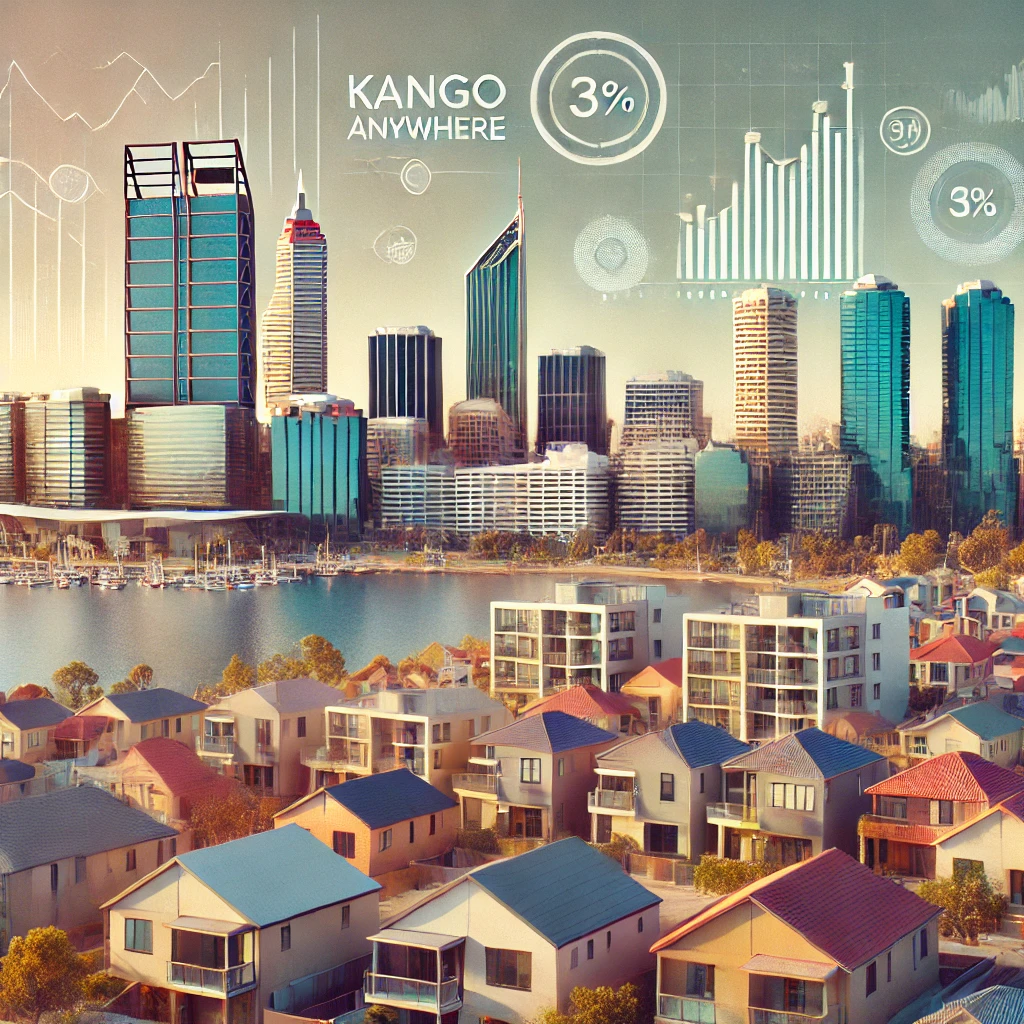Perth has long been considered one of Australia’s more affordable major cities, but the 2024 Demographia International Housing Affordability Report paints a different picture. While still the most affordable major market in Australia, Perth’s housing affordability is deteriorating, with a median multiple of 6.8, placing it firmly in the “severely unaffordable” category. This metric, which divides the median house price by the median household income, is an internationally recognised measure of affordability.
For context, a median multiple of 3.0 or lower is considered affordable. Today, no major Australian city meets that threshold—a striking indication of the nationwide housing crisis.
The Perth Perspective: How Housing Affordability Has Shifted
For decades, Perth’s real estate market was a beacon of affordability compared to Sydney and Melbourne. However, according to the report, Perth’s housing affordability has significantly worsened over the years, and the gap between wages and house prices continues to widen.
Key findings from the report that impact Perth homeowners and prospective buyers:
- Perth remains Australia’s most affordable major city, but at 6.8 times median income, homeownership is still out of reach for many.
- Sydney (13.8) and Melbourne (9.8) are “impossibly unaffordable”, while Adelaide (9.7) and Brisbane (8.1) are also worse than Perth.
- Housing affordability has deteriorated across the board, with Australian cities among the least affordable in the world.
- Urban containment policies drive up land costs, limiting new supply and pushing property prices higher.
While Perth is still relatively affordable compared to the east coast capitals, the long-term trend is concerning.
Why Perth’s Housing Affordability is Declining
1. Urban Containment Policies
One of the biggest drivers of unaffordable housing in Australia, including Perth, is urban containment policies. These policies restrict land supply on the outskirts of cities, increasing land prices and limiting new housing development. The report argues that opening up more land for development would help bring prices down.
2. Wages Aren’t Keeping Up with House Prices
Perth’s median household income hasn’t grown at the same pace as housing prices, which has made homeownership increasingly difficult for middle-income earners. The problem is particularly severe for first-home buyers, who now need larger deposits and higher incomes to enter the market.
3. Interstate Migration and Housing Demand
Perth has experienced strong interstate migration due to its relative affordability compared to Sydney and Melbourne. However, this increased demand has also pushed prices up, particularly in outer suburbs where first-home buyers typically look for properties.
4. Construction Costs and Supply Chain Issues
The rising costs of construction materials and labour shortages have also contributed to higher house prices. Even as demand surges, supply constraints have made it difficult to build enough homes to keep prices stable.
How Perth Compares to Other Australian Cities
| City | Median Multiple (House Price to Income Ratio) | Affordability Rating |
|---|---|---|
| Sydney | 13.8 | Impossibly Unaffordable |
| Melbourne | 9.8 | Impossibly Unaffordable |
| Adelaide | 9.7 | Impossibly Unaffordable |
| Brisbane | 8.1 | Severely Unaffordable |
| Perth | 6.8 | Severely Unaffordable |
What Needs to Change?
The Demographia report advocates for land-use policy reforms that can reduce housing costs and increase affordability. Several potential solutions could improve affordability in Perth:
- Increase land supply: Expanding the urban footprint and reducing zoning restrictions could allow for more affordable housing developments.
- Infrastructure investment: Better transport links to outer suburbs could make lower-cost areas more attractive to buyers.
- Encouraging alternative housing models: Initiatives like build-to-rent and cooperative housing could provide more affordable options.
- Addressing construction costs: Reducing red tape and supporting the construction industry could help bring down the cost of building new homes.
What Does This Mean for Perth Homebuyers?
If you’re looking to buy in Perth, housing is still more affordable than in other major Australian cities, but the trend is heading in the wrong direction. The median multiple of 6.8 suggests that many residents will struggle to enter the market without government incentives or substantial savings.
For first-home buyers:
- The First Home Owner Grant (FHOG) and stamp duty concessions are crucial in helping people get into the market.
- Consider suburbs with strong public transport links where prices are lower but accessibility remains good.
For investors:
- Perth remains attractive due to high rental demand and relatively lower entry costs compared to Sydney and Melbourne.
- Vacancy rates are low, which means strong rental yields are likely to continue.
For renters:
- The rental crisis is also affecting affordability, with vacancy rates at record lows. More supply is needed to stabilise rent prices.
Final Thoughts
The 2024 Demographia International Housing Affordability Report confirms what many Perth residents have felt in recent years: while still relatively affordable compared to the east coast, housing is becoming increasingly out of reach for middle-income earners. Without serious reform to land use policies, infrastructure investment, and housing supply, homeownership will continue to be a challenge for many West Australians.
The question remains: Will policymakers take action before housing affordability reaches crisis levels in Perth?



